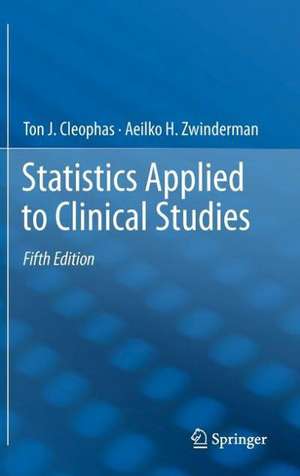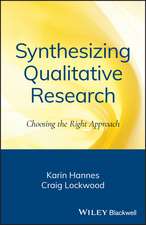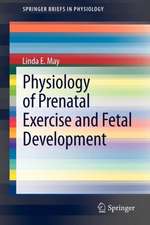Statistics Applied to Clinical Studies
Autor Ton J. Cleophas, Aeilko H. Zwindermanen Limba Engleză Hardback – 9 feb 2012
| Toate formatele și edițiile | Preț | Express |
|---|---|---|
| Paperback (1) | 820.10 lei 38-44 zile | |
| SPRINGER NETHERLANDS – 16 apr 2014 | 820.10 lei 38-44 zile | |
| Hardback (1) | 705.40 lei 38-44 zile | |
| SPRINGER NETHERLANDS – 9 feb 2012 | 705.40 lei 38-44 zile |
Preț: 705.40 lei
Preț vechi: 742.53 lei
-5% Nou
Puncte Express: 1058
Preț estimativ în valută:
134.97€ • 141.31$ • 111.69£
134.97€ • 141.31$ • 111.69£
Carte tipărită la comandă
Livrare economică 01-07 aprilie
Preluare comenzi: 021 569.72.76
Specificații
ISBN-13: 9789400728622
ISBN-10: 940072862X
Pagini: 700
Ilustrații: XXXV, 743 p. 186 illus., 17 illus. in color.
Dimensiuni: 155 x 235 x 46 mm
Greutate: 1.18 kg
Ediția:5th ed. 2012
Editura: SPRINGER NETHERLANDS
Colecția Springer
Locul publicării:Dordrecht, Netherlands
ISBN-10: 940072862X
Pagini: 700
Ilustrații: XXXV, 743 p. 186 illus., 17 illus. in color.
Dimensiuni: 155 x 235 x 46 mm
Greutate: 1.18 kg
Ediția:5th ed. 2012
Editura: SPRINGER NETHERLANDS
Colecția Springer
Locul publicării:Dordrecht, Netherlands
Public țintă
ResearchCuprins
Preface. Foreword.-1 Hypotheses, data, stratification.-2 The analysis of efficacy data.-3 The analyis of safety data.-4 Log likelihood ratio tests for safety data analysis.-5 Equivalence testing.- 6 Statistical power and sample size.-7 Interim analyses.-8 Clinical trials are often false positive.-9 Multiple statistical inferences.-10 The interpretation of the p-values.-11 Research data closer to expectation than compatible with random sampling.-12 Statistical tables for testing data closer to expectation than compatible with random sampling.-13 Dispersion issues.-14 Linear regression, basic approach.-15 Linear regression for assessing precision, confounding, interaction, basic approach.-16 Curvilinear regression.-17 Logistic and cox regression, markow models, regression with laplace transformations.-18 Regression modeling for improved precision.-19 Post-hoc analysis in clinical trials, a case for logistic regression analysis.-20 Multistage regression.-21 Categorical data.-22 Missing data.-23 Poisson regression for event analysis.-24 More on non linear relationships, splines.-25 Multivariate modeling.-26 Bhattacharya modeling.-27 Trend-testing.-28 Confounding.-29 Propensity score matching.-30 Interaction.-31 Time-dependent factor analysis.-32 Meta-analysis, basic approach.-33 Meta-analysis, review and update ofmethodologies.-34 Meta-regression.-35 Crossover studies with continuous variables.-36 Crossover studies with binary responses.-37 Cross-over trials should not be used to test treatments with different chemical class.-38 Quality-of-life assessments in clinical.-39 Item response modeling.-40 Statistics for the analysis of genetic data.-41 Relationship among statistical.-42 Testing clinical trials for randomness.-43 Clinical trials do not use random samples anymore.-44 Clinical data where variability is more important than averages.-45 Testing reproducibility.-46 Validating qualitative diagnostic tests.-47 Uncertainty of qualitative diagnostic tests.-48 Meta-analyses of qualitative diagnostic tests.-49 C-statistics versus logistic regression for assessing the performance of qualitative diagnostic tests.-50 Validating quantitative diagnostic tests.-51 Summary of validation procedures for diagnostic tests.-52 Validating surrogate endpoints of clinical trials.-53 Binary partitioning.-54 Methods for repeated measures analysis.-55 Mixed linear models for repeated measures.-56 Advanced analysis of variance, random effects and mixed effects models.-57 Monte Carlo methods for data analysis.-58 Artificial intelligence.-59 Fuzzy logic.-60 Physicians’ daily life and the scientific method.-61 Incidence analysis and the scientific method.-62 Superiority-testing.-63 Non-inferiority testing.-64 Time series.-65 Odds ratios and multiple regression, why and how to use them.-66 Statistics is no “bloodless” algebra.-67 Bias due to conflicts of interests, some guidelines. Appendix .Index.
Recenzii
From the reviews of the fifth edition:
“‘Statistics Applied to Clinical Studies, 5th Edition’ clearly explains most anything that might be worth knowing about clinical research statistics. The content is accessible to non-staticians and also has the breadth and depth to interest professional biostaticians.” (Norman M. Goldfarb, Journal of Clinical Research Best Practices, Vol. 9 (2), February, 2013)
“‘Statistics Applied to Clinical Studies, 5th Edition’ clearly explains most anything that might be worth knowing about clinical research statistics. The content is accessible to non-staticians and also has the breadth and depth to interest professional biostaticians.” (Norman M. Goldfarb, Journal of Clinical Research Best Practices, Vol. 9 (2), February, 2013)
Textul de pe ultima copertă
Thanks to the omnipresent computer, current statistics can include data files of many thousands of values, and can perform any exploratory analysis in less than seconds. This development, however fascinating, generally does not lead to simple results. We should not forget that clinical studies are, mostly, for confirming prior hypotheses based on sound arguments, and the simplest tests provide the best power and are adequate for such studies. In the past few years the authors of this 5th edition, as teachers and research supervisors in academic and top-clinical facilities, have been able to closely observe the latest developments in the field of clinical data analysis, and they have been able to assess their performance. In this 5th edition the 47 chapters of the previous edition have been maintained and upgraded according to the current state of the art, and 20 novel chapters have been added after strict selection of the most valuable and promising novel methods. The novel methods are explained using practical examples and step-by-step analyses readily accessible for non-mathematicians. All of the novel chapters have been internationally published by the authors in peer-reviewed journal, including the American Journal of Therapeutics, the European Journal of Clinical Investigation, The International journal of Clinical Pharmacology and therapeutics, and other journals, and permission is granted by all of them to use this material in the current book. We should add that the authors are well-qualified in their fields of knowledge. Professor Zwinderman is president-elect of the International Society of Biostatistics, and Professor Cleophas is past-president of the American College of Angiology. From their expertise they should be able to make adequate selections of modern methods for clinical data analysis for the benefit of physicians, students, and investigators. The authors, although from a different discipline, one clinician and one statistician, have been working and publishing together for over 10 years, and their research of statistical methodology can be characterized as a continued effort to demonstrate that statistics is not mathematics but rather a discipline at the interface of biology and mathematics. They firmly believe that any reader can benefit from this clinical approach to statistical data analysis.
Caracteristici
The authors have both medical and mathematical backgrounds Based on famous modules from the Socrates educational project Eudipharm of the EC Innovative because of its explanatory rather than mathematical approach Emphasizes non-classical but increasingly frequently used methods such as equivalence testing, interaction assessment and analysis of genetic data Not equivalent to any current textbook on statistics















